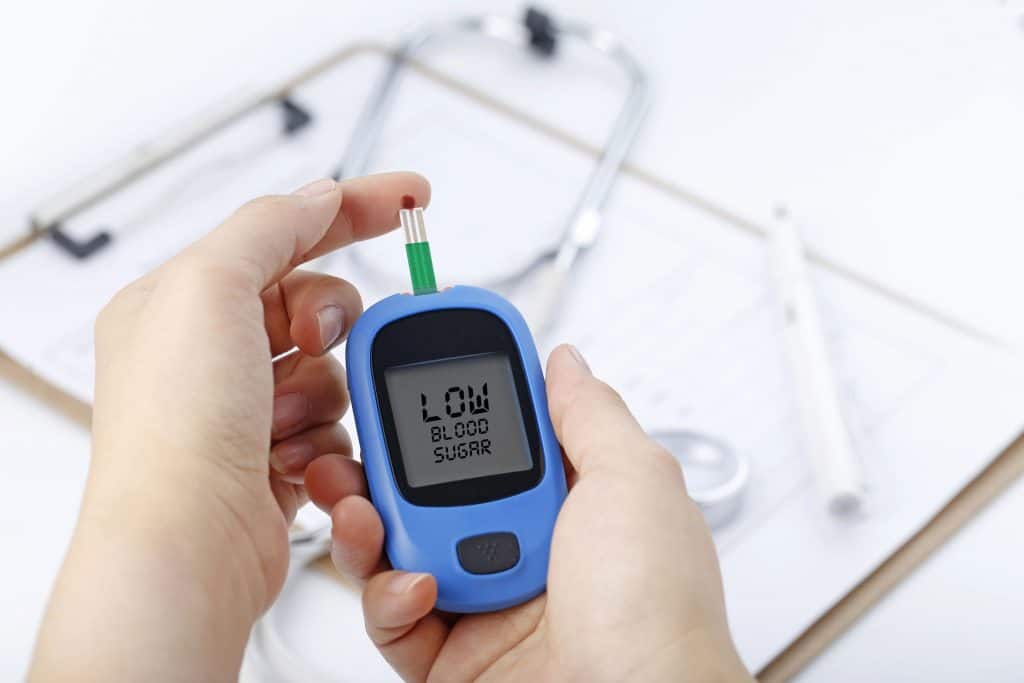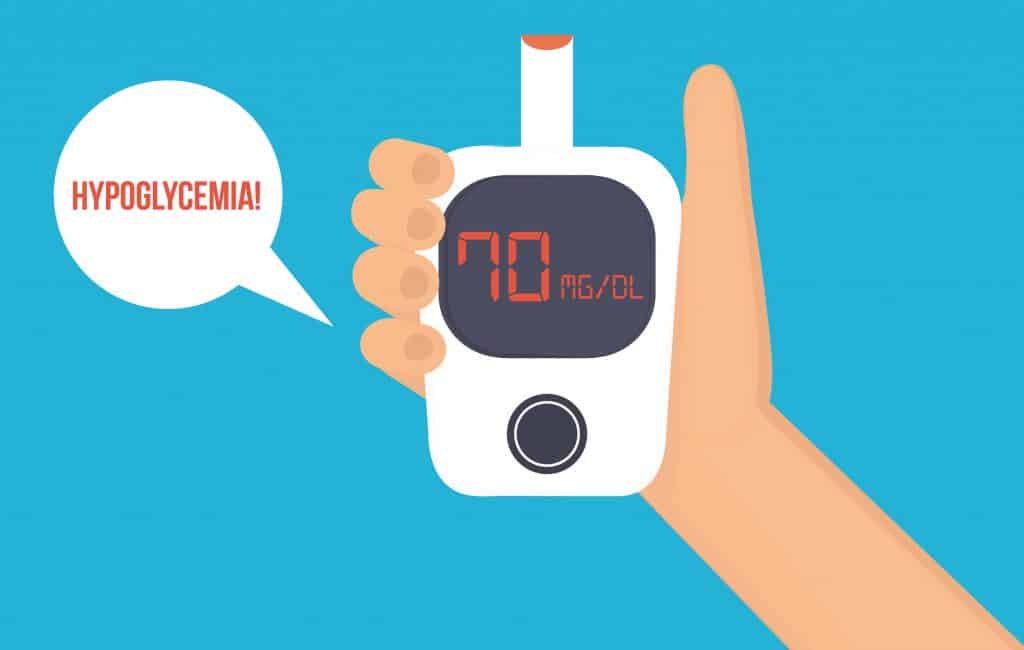What to Do for Low Blood Sugar – Treating and Preventing Hypoglycemia
Posted by Prescription Hope - See Editorial Guidelines (Last Updated On: Fri Apr 28 2023)
Diabetes patients that use insulin as part of their treatment regimen may struggle with low blood sugar levels from time to time. This can be a life-threatening event, and knowing what to do for low blood sugar is crucial for patients.
So, in this article, we will discuss treating hypoglycemia, as well as ways to prevent it. First, we will provide you with a summary to give you a quick answer before we get into more of the fine points.
What to Do for Low Blood Sugar: Low blood sugar (hypoglycemia) can lead to unconsciousness, seizures, and death if it is not immediately treated. Testing your blood sugar and consuming the appropriate amount of carbohydrates to bring your blood sugar back up are the essential parts for treating hypoglycemia. However, teaching and showing your loved ones what to do is also crucial in case you go unconscious.
With the brief summary in mind, let’s cover the details surrounding this topic.
Know the Symptoms of Low Blood Sugar

Before you can ever treat hypoglycemia, you have to know what the symptoms are of low blood sugar. That way, as soon as you notice symptoms, you can take action and treat your low blood sugar before it gets any worse. So, here are some common symptoms of hypoglycemia you should look for.
- Shaky feeling
- Nervousness or anxiety
- Sweating
- Clamminess
- Irritability
- Confusion
- Rapid heartbeat
- Lightheaded feeling
- Hunger
- Nausea
- Feeling sleepy
- Feeling weak or fatigued
- Numbness or tingling of the lips, tongue, or cheeks
- Headache
- Coordination problems
- Seizures
Now that you know the symptoms to look for let’s get into knowing your plan for what you should do when your blood sugar is low.
What to Do for Low Blood Sugar – Your Plan
Having a plan for when your blood sugar drops below normal levels is crucial, as it helps you take action right away. Following these steps below can help.
Test Blood Sugar
The first step in treating hypoglycemia is to test your blood sugar to know exactly how low your blood sugar is. The moment you start to notice symptoms, you should check your blood sugar. Anything below 70 mg/dL must be treated as a hypoglycemic event.
Consume Carbohydrates
After determining how low your blood sugar is, you must get fast-acting carbohydrates in your system. It is recommended that you consume roughly 15 grams of carbohydrates to help raise your glucose. It is important to note here that you may need more carbohydrates depending on how low your blood sugar is and your level of insulin on board. Some options for fast-acting carbohydrates may include:
- 4 ounces of orange juice, soda, or other sugary drink
- Candy
- Tablespoon of honey, syrup, or frosting
- Granola bar
- High carb fruits (bananas, pineapple, etc.)
- Dried fruits (raisins)
- Pastries
- Glucose tablets or gel packets
Anyone that uses insulin to treat their diabetes is always recommended to have fast-acting carbohydrates near them.
Retest and Repeat

After this, you need to wait about 15 minutes before you repeat this process. After waiting, you will recheck your blood sugar. If it has not been corrected and is still low, then you will consume another 15 grams of carbohydrates. Wait another 15 minutes and then test again.
After it’s Back to Normal
After your blood sugar returns to normal levels, it is recommended that you get some sort of protein in your system. Doing so will help in keeping your glucose levels stable and prevent the possibility of another dip in blood sugar. Peanuts, cheese, chicken, or turkey are good protein options.
Helping Others Help You
When it comes to developing a plan for low blood sugar, you should ensure that your loved ones are aware of what can happen and what they need to do. Since severe hypoglycemia can cause unconsciousness, you may need to rely on others to get you the help you need. Here are a couple of ways you can help others help you treat hypoglycemia.
Teach Others
As a person with diabetes, those closest to me know what to do if they were to find me unconscious due to low blood sugar. I took the time to explain to them what needs to be done and where I keep my glucagon. Whether it’s your spouse, parents, sibling, or roommate, they should know what needs to be done, including how to inject a glucagon shot and when to call an ambulance.
Wear ID Bracelet
Many patients with diabetes that are prone to hypoglycemic events often wear medical ID bracelets. In the event that you are not near a close friend or family member, the medical ID lets strangers know that you have a condition. This will help them, and first responders treat you quickly and appropriately.
What to Avoid When You Have Low Blood Sugar
There are certain things that you should avoid doing when you have low blood sugar. You certainly do want to drive, as this puts not only you but others on the road at risk. If you are driving and start to feel symptoms, you should pull over immediately and implement the plan mentioned above.
Avoid working out or performing any physically exhausting activity if you are experiencing hypoglycemia. Continuing to exercise when your blood sugar is below 70 mg/dL can cause your glucose to drop much faster than if you were to rest until your glucose is back to normal.
Lastly, even though you want to consume carbohydrates for low blood sugar, you should avoid overeating carbohydrates. I can tell you from firsthand experience that when you’re having a low, it is very easy to eat impulsively. However, this can lead to a dramatic spike in blood glucose, possibly creating a roller coaster of highs and lows.
Ways to Prevent Low Blood Sugar
The best treatment for hypoglycemia is to prevent it from occurring. There are a few ways to do this, which are outlined below.
Check Your Blood Sugar Often
Checking your blood sugar often will aide you in knowing trends in your glucose levels and catch lows before they become severe. It is recommended that you check your sugar before driving or performing other activities that put you or others at an increased risk of injury.
Snack Appropriately
Keep snacks handy that contain carbohydrates. If you know that you are going to go a few hours without a meal, then try having a snack at the halfway mark between meals. If you are planning to exercise and your blood sugar is below 100 mg/dL, then have a small snack 30 minutes beforehand. It is best to ensure these snacks have a good balance of carbohydrates and protein.
Talk to Your Doctor
You should talk to your doctor about ways to prevent low blood sugar that are specific to your condition and lifestyle. It is especially important to consult your doctor about making any changes to your treatment plan or adjusting your diet and exercise regimen.
Conclusion
As you can see, knowing what to do for low blood sugar is crucial to ensure your condition is well controlled. We hope this has given you greater insight into having a plan for low blood sugar.
If you are paying more than $60.00 a month through Prescription Hope’s medication access service for your insulin or other medication, then Prescription Hope can help you save money. We work with pharmaceutical manufacturers to provide you with the prescription drugs you need at a set, affordable cost. Enroll with us and start saving money.
ENROLL



